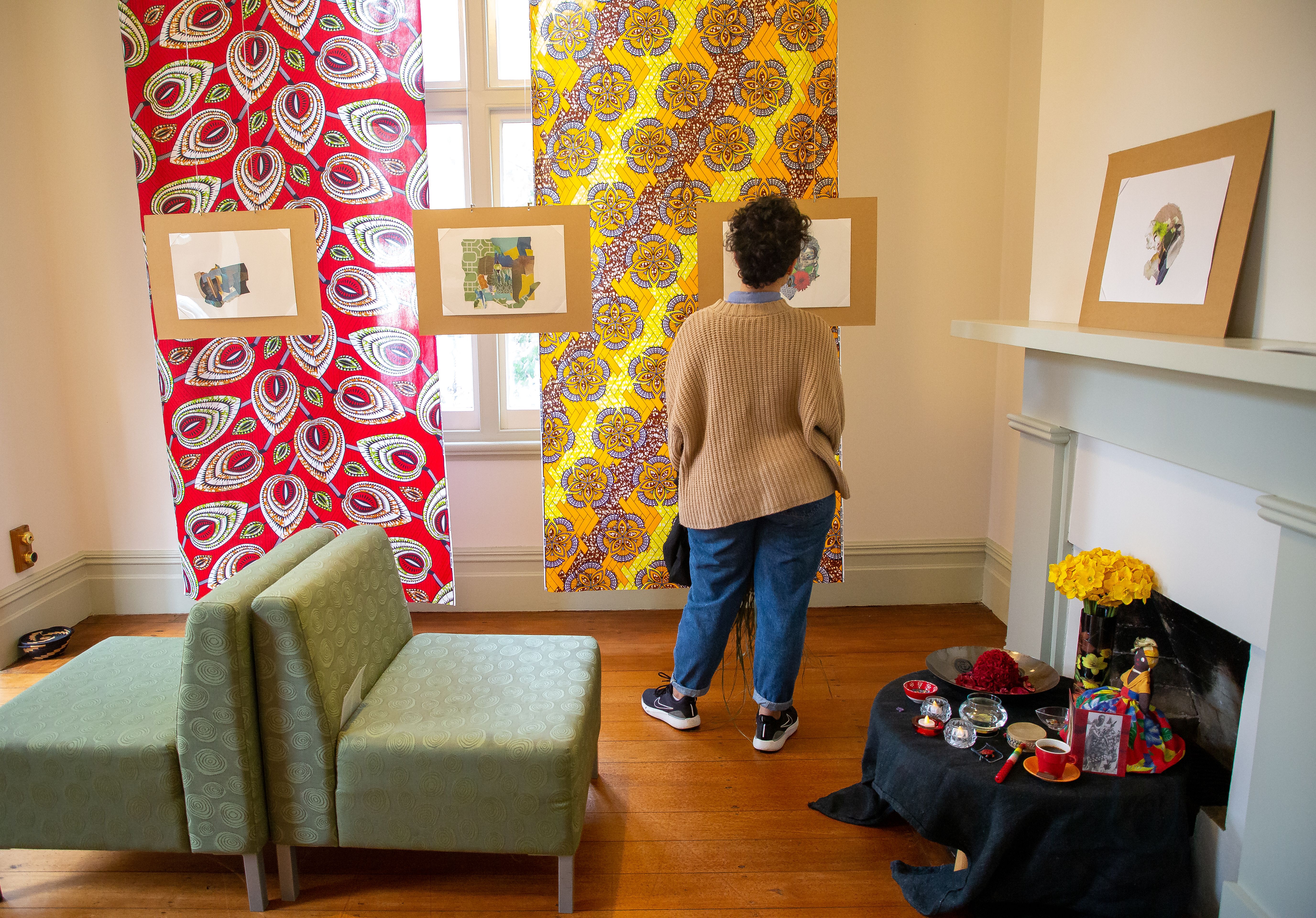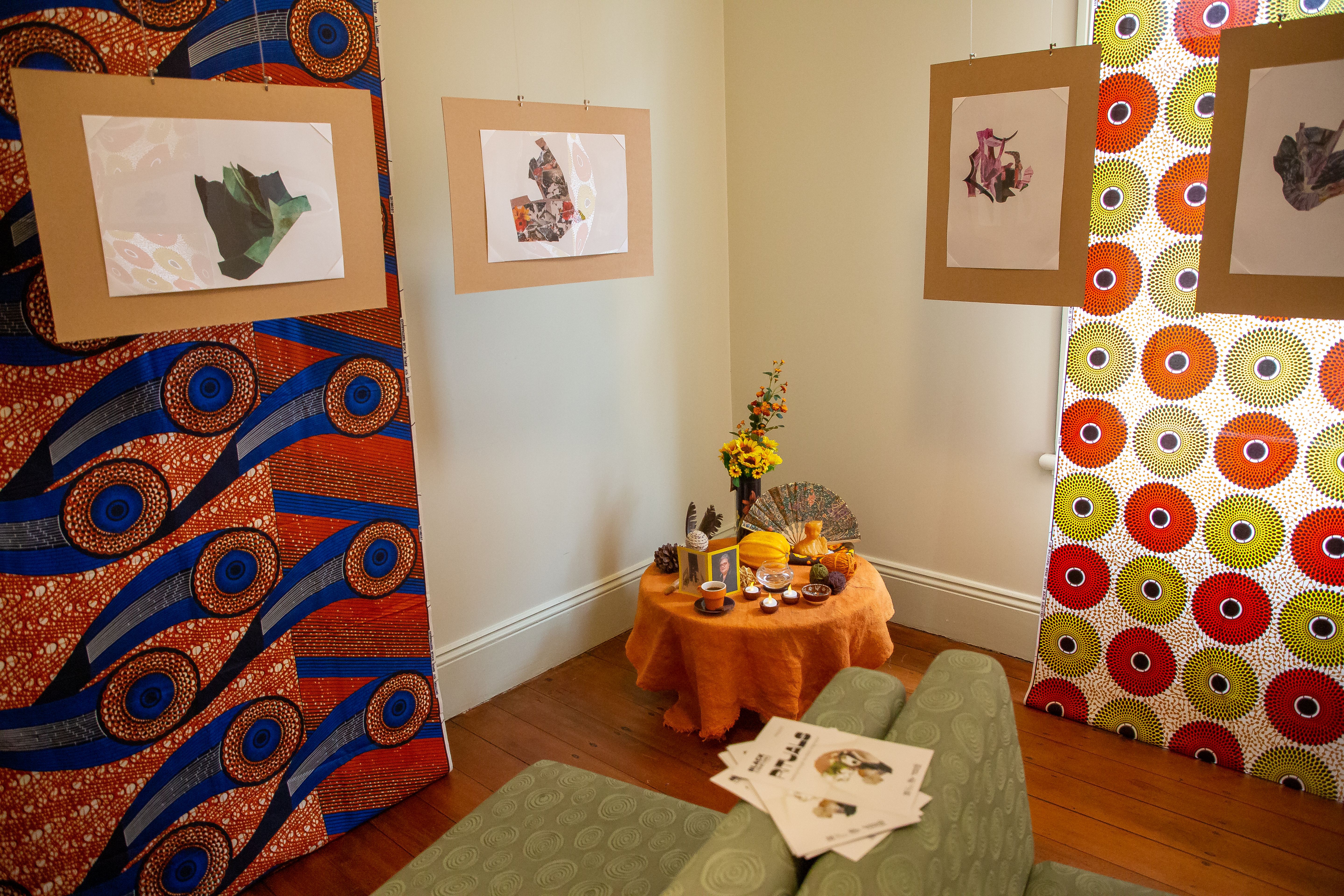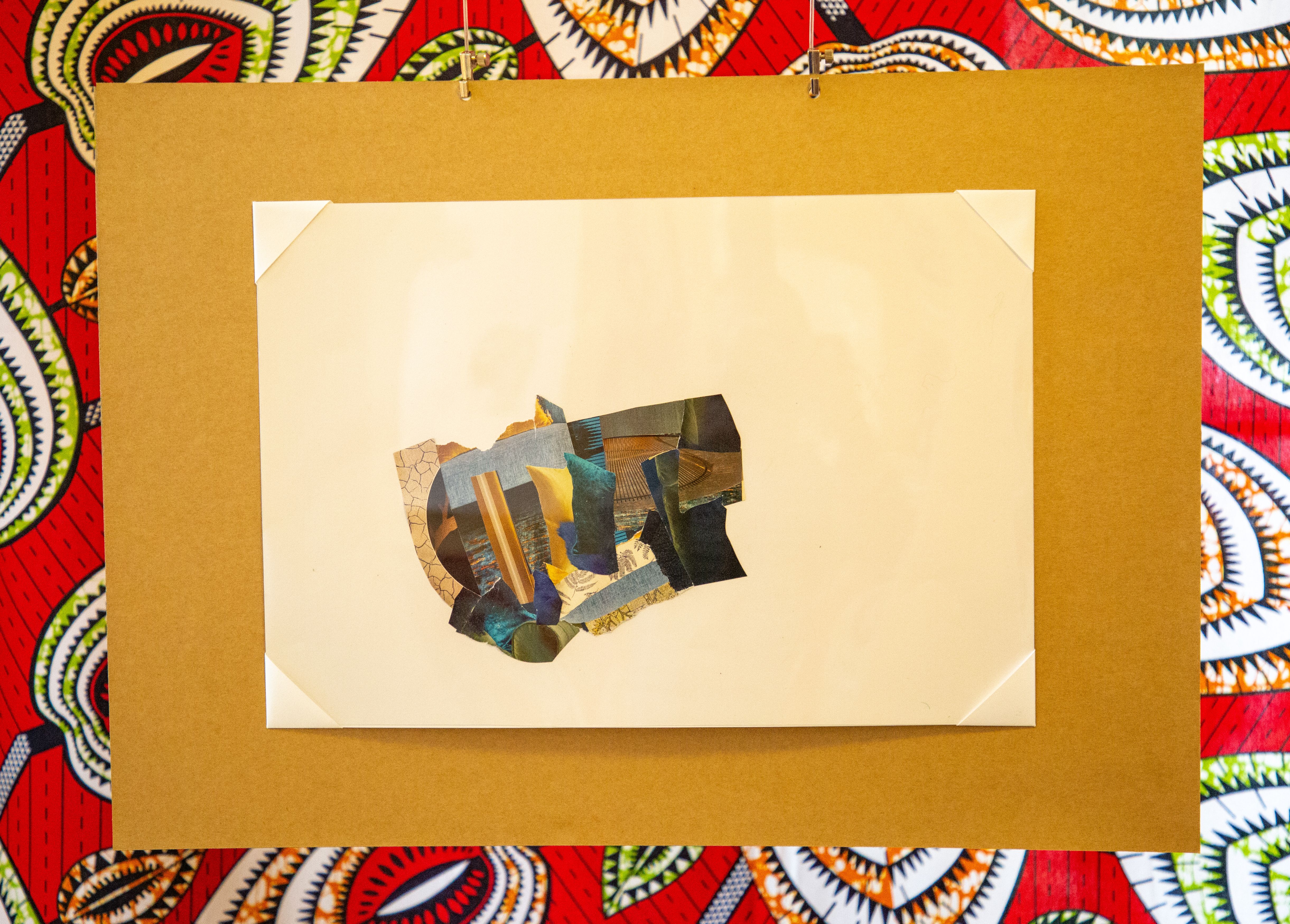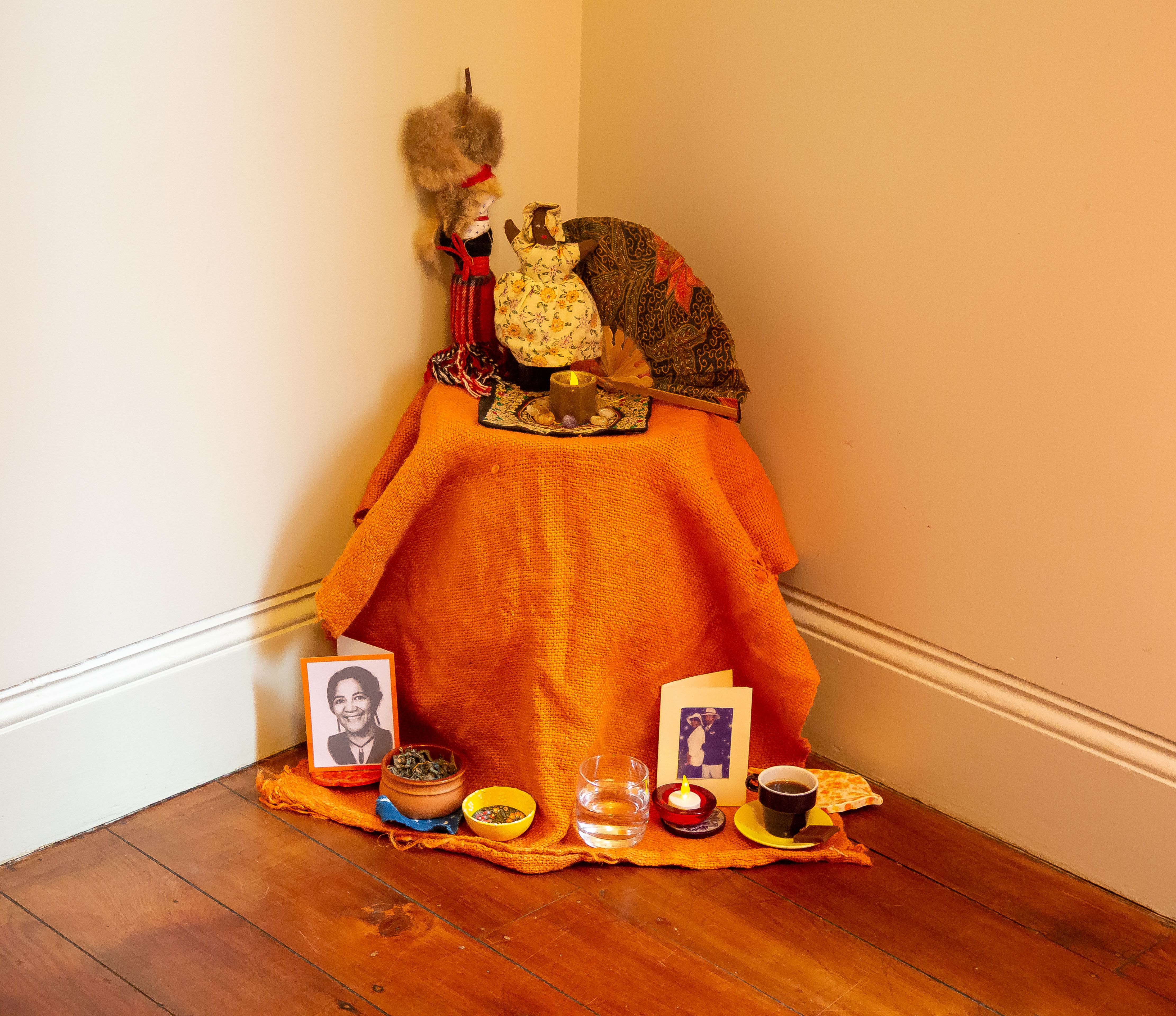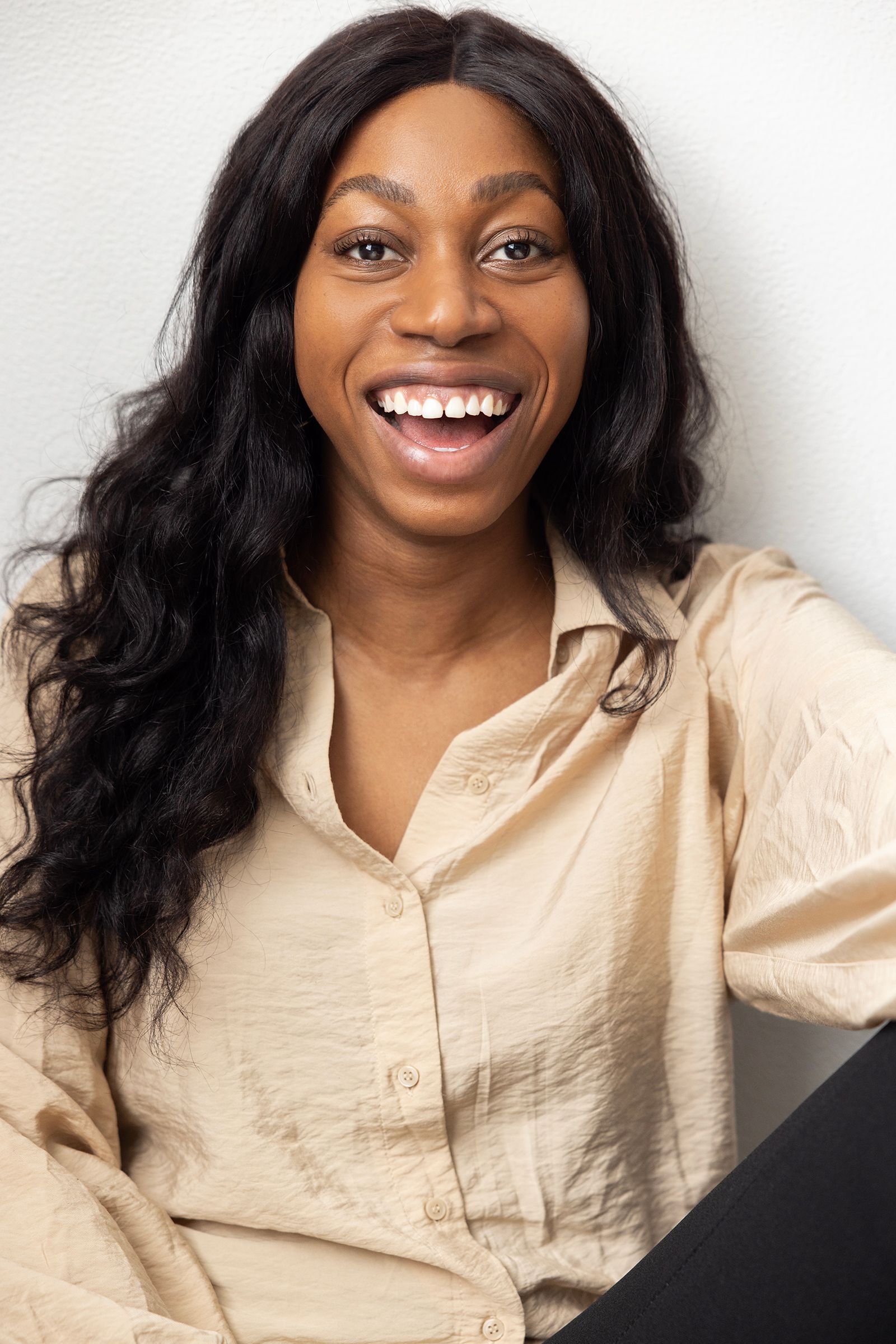Exploring Healing, Identity and Connection Through Rituals of the Black Imagination
Curated by Serenity Wise, Rituals: Healing Through the Black Imagination was an immersive exhibition that celebrated Black artistry and power. Jennifer Onyeiwu responds to this exhibition, which was brought together by Black Creatives Aotearoa.
Rituals: Healing Through the Black Imagination was a celebration of Black artistry, where artists and attendees converged to witness the transformative power of ritual. The installation, curated by Serenity Wise, was situated at the Caretaker’s Cottage in Albert Park. Serenity specialises in visual arts and nuanced narrative storytelling from an African and African diasporic perspective, which shone through in every corner of the space.
The installation explored the power of the Black imagination, as inspired by Natasha Marin’s 2020 book. The event focused on representation, community capacity and capability building, along with opportunities to share cultural knowledge and expertise. Rituals provided a space for conversations and connections between those present, embodying the intention to provide healing for Black communities.
Poata Alvie McKree (Ngāpuhi, Ngāti Kahu ki Whangaroa, St Vincent, Barbados) was one of the key contributing artists in this installation. She holds a strong commitment to storytelling and facilitating connection to the divine, the ancestors and the earth. Through performance and textile-based installations, her work reimagines the lived experiences of her ancestors as a way of healing the rifts in cultural identity caused by colonisation, migration and the trans-Atlantic slave trade.
As participants gather, they bring with them their unique stories and perspectives, creating a collage of experiences akin to the artwork itself. All around are African wax prints, known as ankara. These colourful and versatile materials are used for a variety of different purposes, from clothing to upholstery. In the installation, the ankara hang from the three-metre ceilings. They are thoughtfully and purposefully used to adorn the walls, both as vibrant backdrops to the exhibition, and as artworks in their own right. In many of the rooms, ankara prints hang in front of windows that let in abundant streams of light – becoming illuminated like stained-glass windows. In other places, the ankara hang against walls, while other artworks are suspended in front of them.
One example of this is a red ankara, against which hangs a collage that acknowledges the experiences of travel and migration – recognising the challenges faced by multicultural individuals, like myself, who may navigate multiple cultural identities. This collage, crafted using torn Air New Zealand boarding passes, incorporates images of coconut palms and lush green vegetation. The combination of earthy tones and vivid pops of green and red catches the eye and represents the lively essence of Aotearoa. By incorporating torn boarding passes, the collage symbolises the journey and movement of multiculturalism, reflecting the intersections of our identities and the diverse landscapes we traverse.
Throughout the exhibition, there are many tables upon which ‘offerings’ are placed. Positioned directly across from the bay window, a circular table rests beneath the fireplace mantel, its surface draped in a black cloth. Adorning the table is a cylindrical vase brimming with daffodils, a metallic bowl overflowing with crimson rose petals, several tea-light candles offered by visitors, and an array of other small trinkets. Among them is a captivating African doll resplendent in a red-patterned skirt, complemented by a yellow top and a delicate pearl necklace. A collection of jewellery finds its place within a small glass dish, while a den-den daiko adds a touch of rhythm and tradition. Tucked beneath the table, a flax hand-broom evokes memories of the diligent dadas (sisters) in Dar-es-Salaam, Tanzania, meticulously sweeping the school classrooms.
None of the pieces in the exhibition have titles – a deliberate omission that I find significant. The art, in its essence, requires no explicit labels. The absence of titles or descriptions provides an opportunity for viewers to engage with the art on a personal level, interpreting it in their own unique way. This approach aligns with the intention of the event, where visitors are encouraged to bring items that hold personal symbols and offer a sense of healing. Allowing individuals to observe the artwork through their own lens fosters introspection and facilitates a deeply personal healing process.
As we walk around, a voiceover resonates within the room, reflecting upon the profound impact of George Floyd’s tragic death. These oral narratives, by Black Creatives Aotearoa members, were visioned and cultivated by guest creative Natasha Marin. The voiceovers have the unexpected effect of bringing people together in shared grief, a realisation that is bittersweet – acknowledging our sorrow while recognising the cathartic power that communal mourning can hold. It poses a poignant question: When will the healing potential of our celebrations, filled with joy and unity, outweigh our collective tragedies?
Within these artistic spaces, healing goes beyond visual expression. It is rooted in the conversations and connections that emerge. These discussions prompt introspection, and exploration of individual and collective identities, which ultimately foster a sense of community that nurtures the healing process. As visitors gather in these spaces, they bring with them their own stories and perspectives. A collage of skin tones, faces and experiences all meld together, akin to the collages on the wall.
Down the hallway is a room on the left. Along the back wall, a long table sits beneath a window covered with an ankara featuring blue, red and yellow zigzag patterns. With the room lights dimmed and the sole illumination emanating through the fabric, the space becomes mesmerising. Exploring the different corners of the room, I discover pieces that pay homage to the African diaspora. From the presence of drums to the Maasai figurines gracefully set on the mantel, and the woven baskets scattered across the wooden floors, each artefact serves as a testament to the diverse cultural heritage and traditions of the African diaspora.
Perched on the mantel next to the Maasai figurines is a collage I interpret as being a pink storm, which I find a powerful metaphor for Black femininity and strength. The fabric of a pink chiffon gown on the left swirls gracefully as if caught in an ethereal breeze. It exudes an aura of feminity and elegance. On the right side, a headless mannequin stands adorned in a pink-and-black polka-dot playsuit. The outfit expresses a sense of playfulness, offering a stark contrast to the flowing gown. Upon further inspection, shreds of what appear to be a rose-coloured Chanel watch or fragments of a fragrance bottle lie atop the mannequin. At the heart of the collage, the viewer is drawn to the striking face and décolletage of a Black model. Fluffy pink feathers are draped around her neck, their softness contrasting with the sharp angles of her features. Her presence emanates power, beauty and resilience, and celebrates diversity and representation.
When will the healing potential of our celebrations, filled with joy and unity, outweigh our collective tragedies?
A black-and-pink spider crawls off to the bottom right corner of the piece. The colouring of the spider echoes the various pink hues throughout the collage. The spider, an emblem of tenacity, creativity and interconnectedness, represents the resilience and strength of Black femininity. To me, the presence of the spider carries a profound message: the voices of Black women will no longer be silenced or overshadowed. It serves as a visual manifestation of the determination to break free from the confines of invisibility, reclaim space and recognise the invaluable contributions we make to society.
Collectively, there are many works in the exhibition that serve as visual homages to Black women, to celebrate their multifaceted nature, triumphs, and capacity for joy. They challenge societal narratives and stereotypes as viewers are invited to recognise and appreciate the unique experiences, strength and beauty of Black women. The artworks speak to the resilience and unwavering spirit of Black femininity, as well as the limitless possibilities when we embrace our identities and come to find power in self-expression.
In the final space is a rumination room, where profound queries adorn the walls. On crisp white A4 sheets of paper, the black ink stands out like scribbled journal prompts. Having nurtured the habit of journaling since the tender age of nine, I am drawn to these icebreakers. They provoke introspection and self-discovery: “To whom or what do you turn for healing?”, “Envision a world where you feel safe, valued and loved”. Within the confining yet liberating space, these thought-provoking questions beckon individuals to embark on a personal journey of self-exploration. They hold the key to unlocking inner truths and inspiring a deeper understanding of oneself.
What does it sound like when you claim yourself?
Answering that question made me unexpectedly tear up. When you claim yourself, the result is a harmonious absence of internal noise. A moment of profound stillness allows your authentic voice to rise and resonate. In the absence of external distractions and the incessant chatter of self-doubt, you can hear the whispers of your true desires and aspirations. It is the absence of pretence that allows you to embrace your genuine self without fear or judgement. The sound of claiming yourself is not always a peaceful melody. Nevertheless, it is a resolute declaration that reverberates through your being, reminding you of your inherent worth and empowering you to navigate the world with confidence and clarity.
When do you feel most powerful?
I feel most powerful when I stand in front of the camera, fully immersing myself by embodying another human being. In those moments, I experience a profound connection, where my vulnerability intertwines with my strength. It is through this vulnerability that I have come to realise the immense power that arises from openness and authenticity. It is a transformative experience, both for myself and those who witness it. I have discovered that genuine human connection and art hold the keys to profound healing and self-discovery, allowing me to tap into a wellspring of power that I never knew existed. An open body and soul are strong and powerful. I choose that openness. There is a river of healing to be found there.
